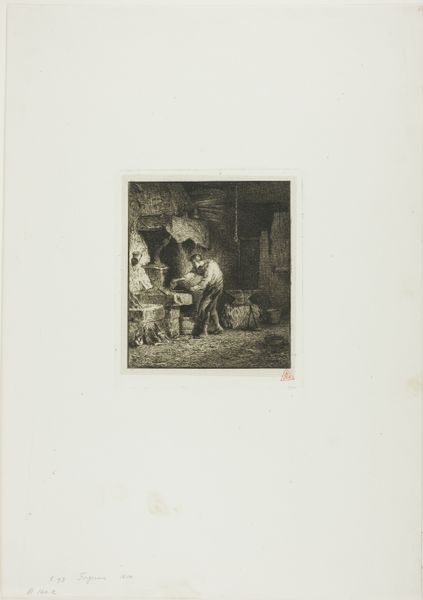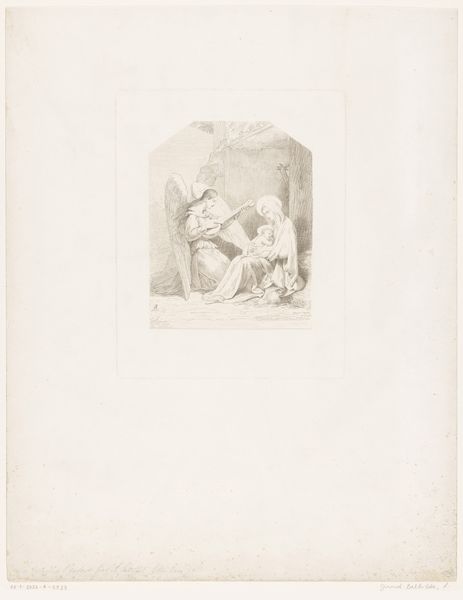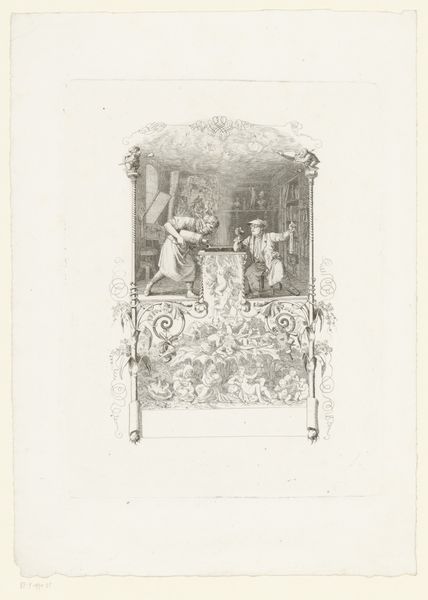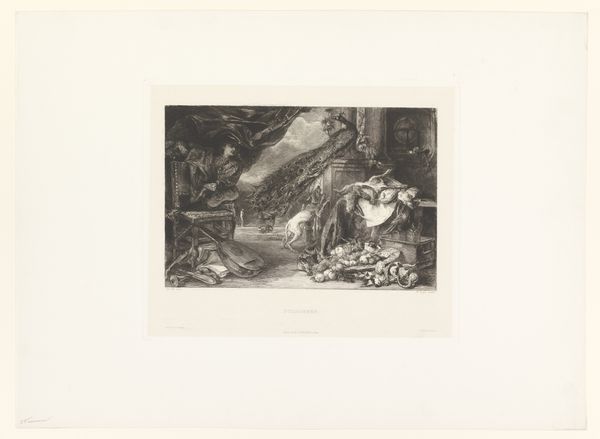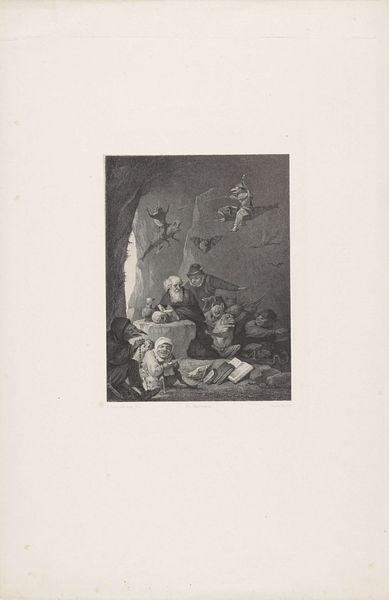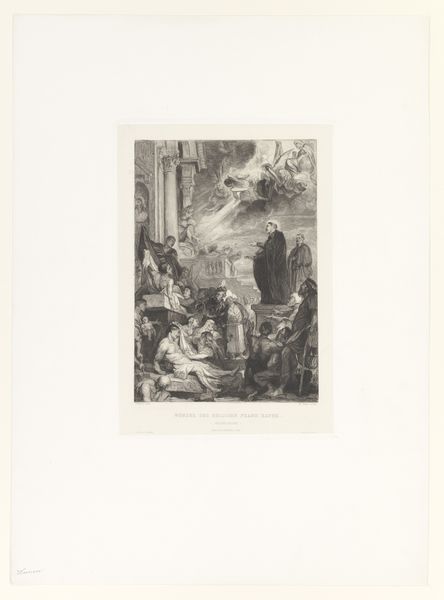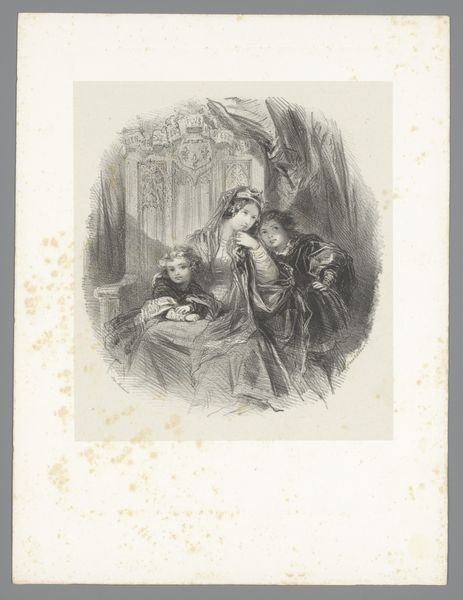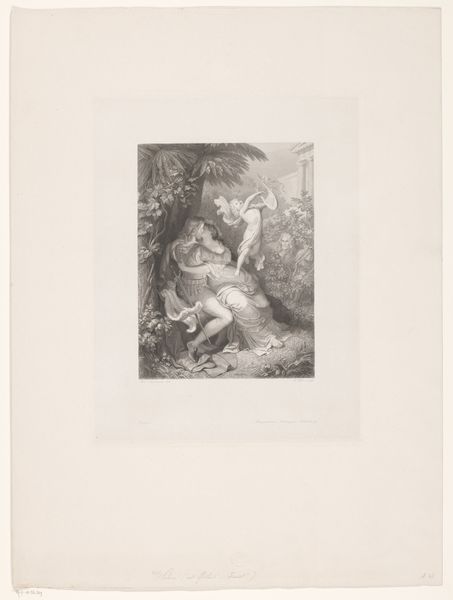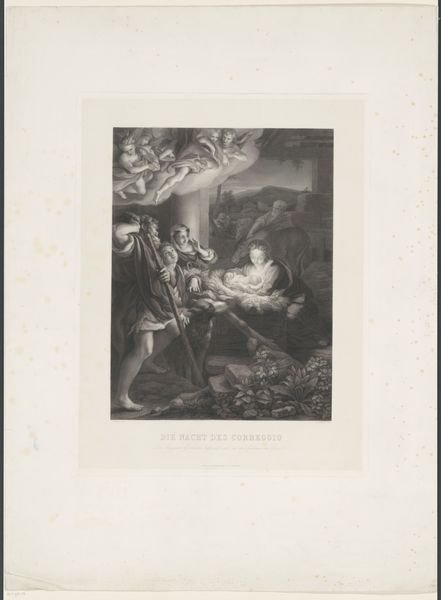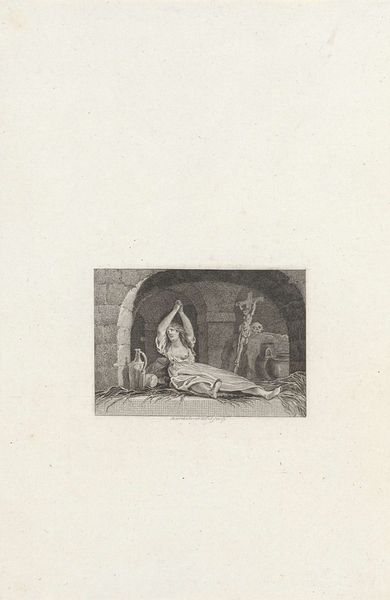
drawing, lithograph, print, paper, pencil
#
drawing
#
narrative-art
#
lithograph
# print
#
paper
#
pencil drawing
#
romanticism
#
pencil
#
history-painting
Dimensions: 212 × 203 mm (image); 493 × 347 mm (sheet)
Copyright: Public Domain
Curator: This lithograph by Eugène Delacroix, from 1829, is titled "Fronte-boeuf and the Witch, from Ivanhoe," based on Walter Scott’s novel. Editor: It strikes me immediately as dramatic, even theatrical. The composition feels very stage-like with its clear foreground and background elements, and the use of light and shadow enhances that sense of drama. It seems a tense moment frozen in time. Curator: Delacroix was deeply involved in the Romantic movement and admired Walter Scott. Lithography provided a more accessible means of distributing images that would amplify the literary fascination. Think about how this medium, a relatively new form of printmaking at the time, democratized the art market and extended cultural engagement. Editor: Absolutely, the materials used are fundamental to understanding the print’s social reach. The use of pencil on paper lends itself to reproducibility and, consequently, broad consumption. The stark contrasts achieved with the lithographic stone must have resonated well within burgeoning urban readership. Curator: Exactly. Delacroix used this popular medium to delve into a popular novel, furthering his role in the distribution of imagery that solidified narratives and historical dramas. And don’t forget about the political backdrop: France was experiencing enormous social change after the Revolution. Romanticism allowed people to think critically about society. Editor: From a materialist angle, I note the deliberate blurring of background detail to bring the human figures into sharp relief. How does that impact the perceived social dynamic and the value of the labor depicted within? The act of unveiling, too—we must consider its historical significance concerning power dynamics and class visibility. Curator: The piece, therefore, really underscores the artist’s role in shaping how stories and morals were conveyed during this period. By examining who was making the prints and for whom, we grasp not only its aesthetic qualities but its political implications too. Editor: True. Reflecting on Delacroix’s lithograph reveals the profound interconnection between material execution and sociocultural interpretation, something so key to experiencing the work.
Comments
No comments
Be the first to comment and join the conversation on the ultimate creative platform.
